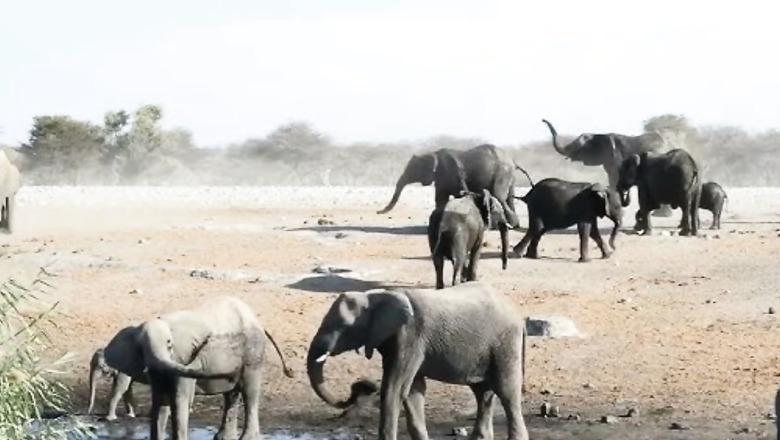
views
Over 700 wild animals are set for slaughter in Namibia to alleviate food insecurity among the population affected by the country’s worst drought in a century. As declared by the nation’s Ministry of Environment, Forestry and Tourism, 83 elephants, 60 buffalo, 30 hippos, 100 blue wildebeest, 50 impala, and 300 zebras are to be slaughtered. The UN estimates that the drought has caused almost 84% of the nation’s food supplies to run out.
“This exercise is necessary and is in line with our constitutional mandate where our natural resources are used for the benefit of Namibian citizens,” a statement from the country’s environment ministry read.
According to a press release, the culling will only occur in national parks and community areas with ecologically sound wildlife populations.
As per officials, the culling endeavour will reduce animals in regions where their numbers “exceed available grazing and water,” thereby reducing pressure on water supplies.
Additionally, it seeks to lessen the possibility of elephants and humans getting into conflict, which may arise during droughts when animals come into touch with humans in their quest for food and water.
Environment Ministry official Romeo Muyunda told AFP that around 157 of the overall 723 animals targeted for culling had already been killed.
According to DW, analysts blame the El Nino weather conditions — exceptionally severe this year — for the prolonged dry spell. Due to the ongoing drought, Namibia, Zambia, Zimbabwe, and Malawi declared states of emergency a few months ago.
According to the UN, children under the age of five are experiencing acute malnutrition and, in certain situations, mortality as a result of the present drought.
In August, the World Food Program reported that over half of Namibia’s population, or 1.4 million people, were suffering from severe food insecurity due to a 53% decline in cereal production and a 70% decline in dam water levels from the previous year.
The U.S. aid agency stated that July through September is the “peak of the lean season, when food is scarcest,” as it announced an additional $4.9 million in assistance last month.













Comments
0 comment